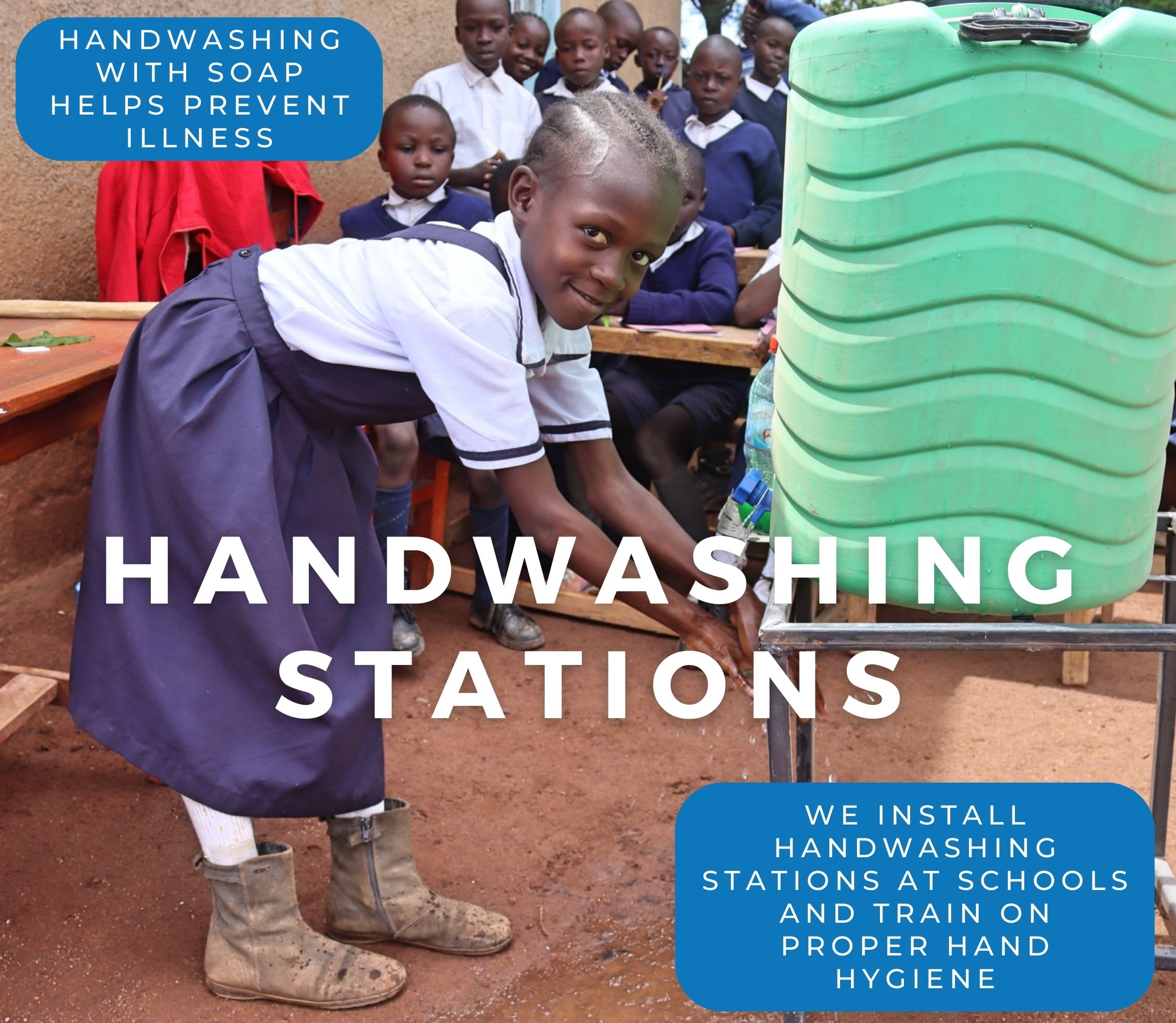The 174 students and 14 teachers at Kavililo Secondary School face a daily water crisis that steals their time, diminishing their daily learning and chance of success. They primarily rely on rain tanks at their school for water. Still, these quickly run dry, forcing students to walk long distances to collect water from an open earth dam that is contaminated, posing a threat to everyone's health.

The school has rain tanks that are too small to meet demand.
Field Officer Jefferson Mutie shared about the school's current water options.
About the rain tanks, he said, "Plastic tanks [are] placed near the school buildings. They try to keep the area clean, but without proper drainage and regular maintenance, it sometimes gets muddy and dusty, especially during the rainy season. Sometimes the water from this source looks a bit cloudy and has a slight brownish tint, especially after it rains. It can also have a metallic or earthy taste, and on some days, there's an unpleasant smell that makes students hesitant to drink it."
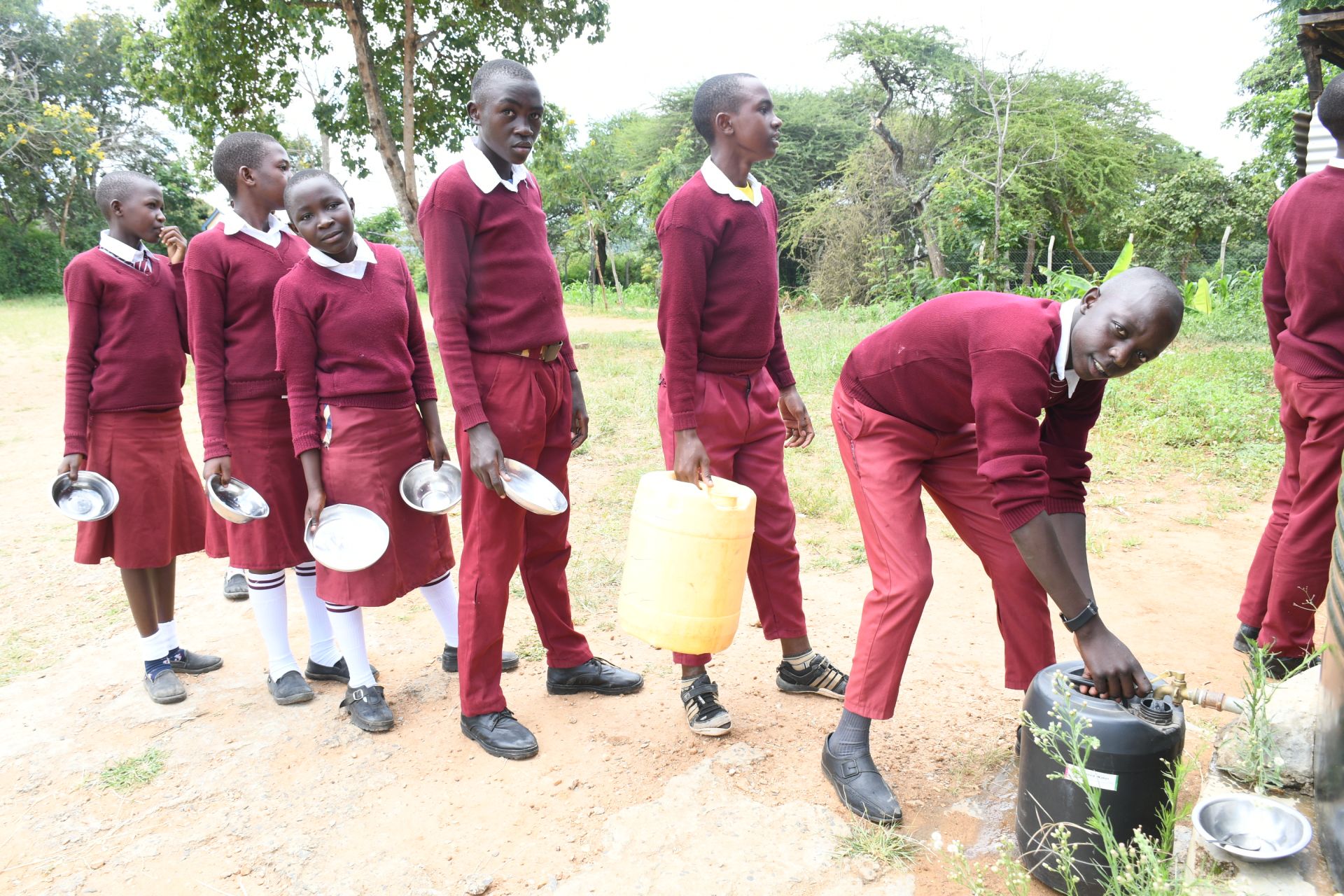
Students wait to collect water from the rain tank.
Although the water collected in the rain tanks is not ideal for consumption, it is the most convenient source for students to access, as it does not require them to spend time and energy finding an alternative solution. Yet, the tanks run dry quickly, with so many individuals relying on them, forcing students to leave school and collect water from a faraway community earth dam.
"The dam is located at a distance from the school, requiring students or staff to walk long stretches, often under the hot sun. The path can be rough, with uneven or dusty ground, and difficult to navigate when the surface is dry and cracked. During this season, the water level in the dam drops significantly, forcing more water users to flock to the water source. This not only makes the journey exhausting but also increases the risk of injury and contamination," said Jefferson, describing the students' trek to the dam.
"While it is an important water source, the area is not always well-maintained. The surroundings can become muddy, especially during the rainy season, and animals sometimes drink from or bathe in the dam, affecting the water's cleanliness. There is little protection or fencing around the dam, making it vulnerable to contamination from runoff and human activity. As a result, the water collected from the earth dam is often not safe for drinking without proper treatment," he continued.
"The water from this source often appears cloudy or muddy, especially after rain. It sometimes has a brown or yellow tint, which makes it look unclean. The smell is unpleasant—earthy or slightly sour—and the taste is often metallic or bitter. These issues make students and staff hesitant to drink the water," he concluded.

Patrick at one of the small rain tanks.
Fifteen-year-old student Patrick is familiar with the daily struggle of collecting enough water to meet his needs.
He shared: "There isn’t enough water at our source, mainly because the rain is unpredictable, and the water tanks sometimes don’t produce enough. When the tanks run dry, it feels frustrating and worrying because we don’t have enough water for drinking, cleaning, or cooking. I feel bad about the water situation in our school."
When the rain tanks run dry, Patrick must take the long, tiring journey to collect water from the only alternative source, the faraway earth dam. Each trip is exhausting and takes him nearly an hour, pulling him away from the critical task of learning and enjoying his everyday life.
"When I’m sent to fetch water from the earth dam, I feel tired and sometimes scared. The walk is long, and the ground near the water is slippery and muddy. I worry about falling or getting hurt, and I miss class time while I’m away," shared Patrick.
"First, the dam is located about 45 minutes away from the school, which means students must walk a considerable distance just to reach it. The journey is often on rough, uneven terrain that slows us down, especially when we are carrying heavy containers of water on the way back. Second, the condition of the earth dam during the dry season makes access even more difficult. As water levels drop, people are forced to walk further into the muddy or cracked basin to reach what little water remains. This not only adds time but also makes the task more physically exhausting," he declared.
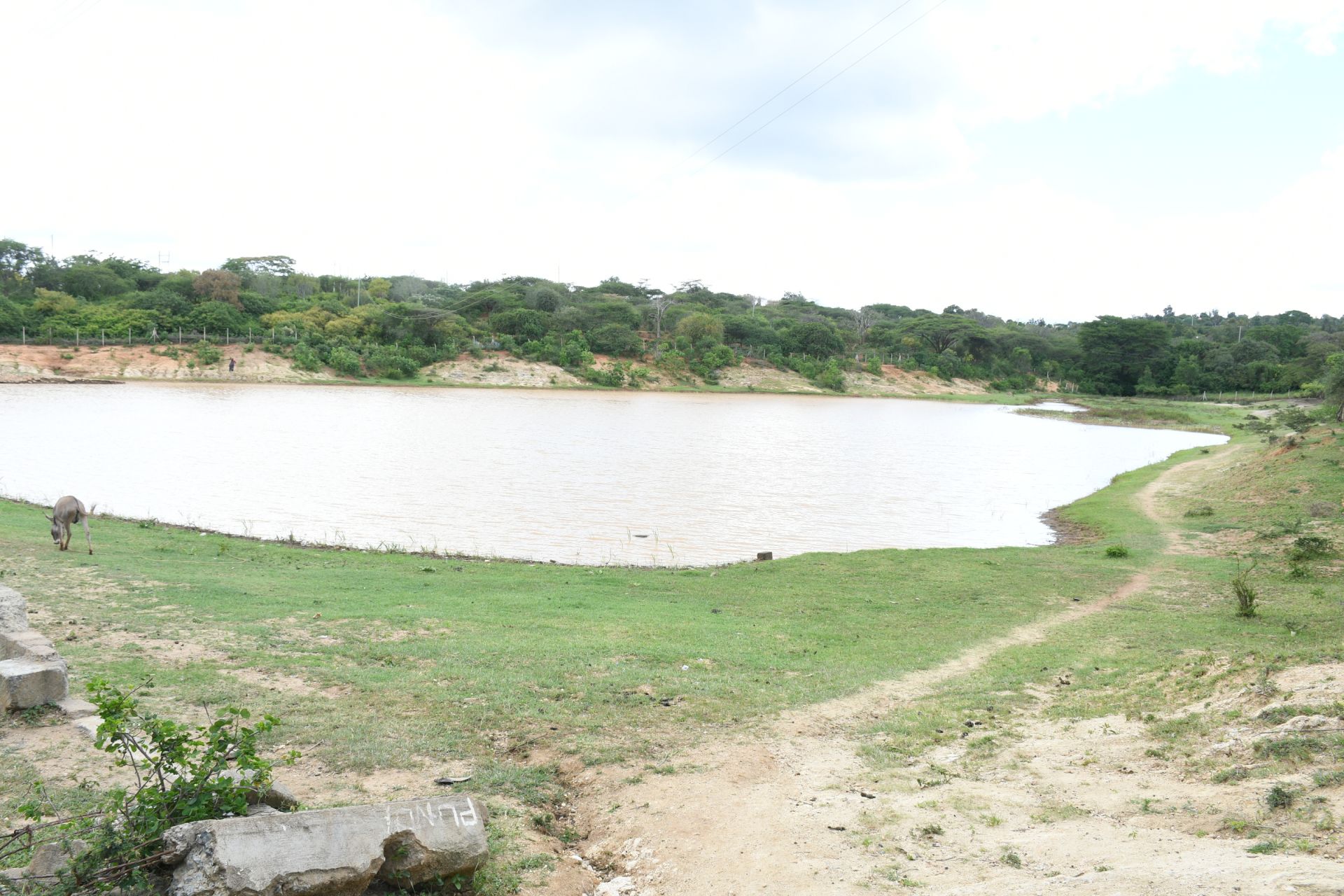
The faraway, easily contaminated earth dam.
Sadly, collecting water is a constant worry for Patrick. One that distracts him from learning and living in peace.
"I'm worried about safety at the earth dam because the path is slippery and rocky, and sometimes animals are near the water. I’m scared I might fall or get hurt while fetching water, especially when it’s crowded," Patrick said.
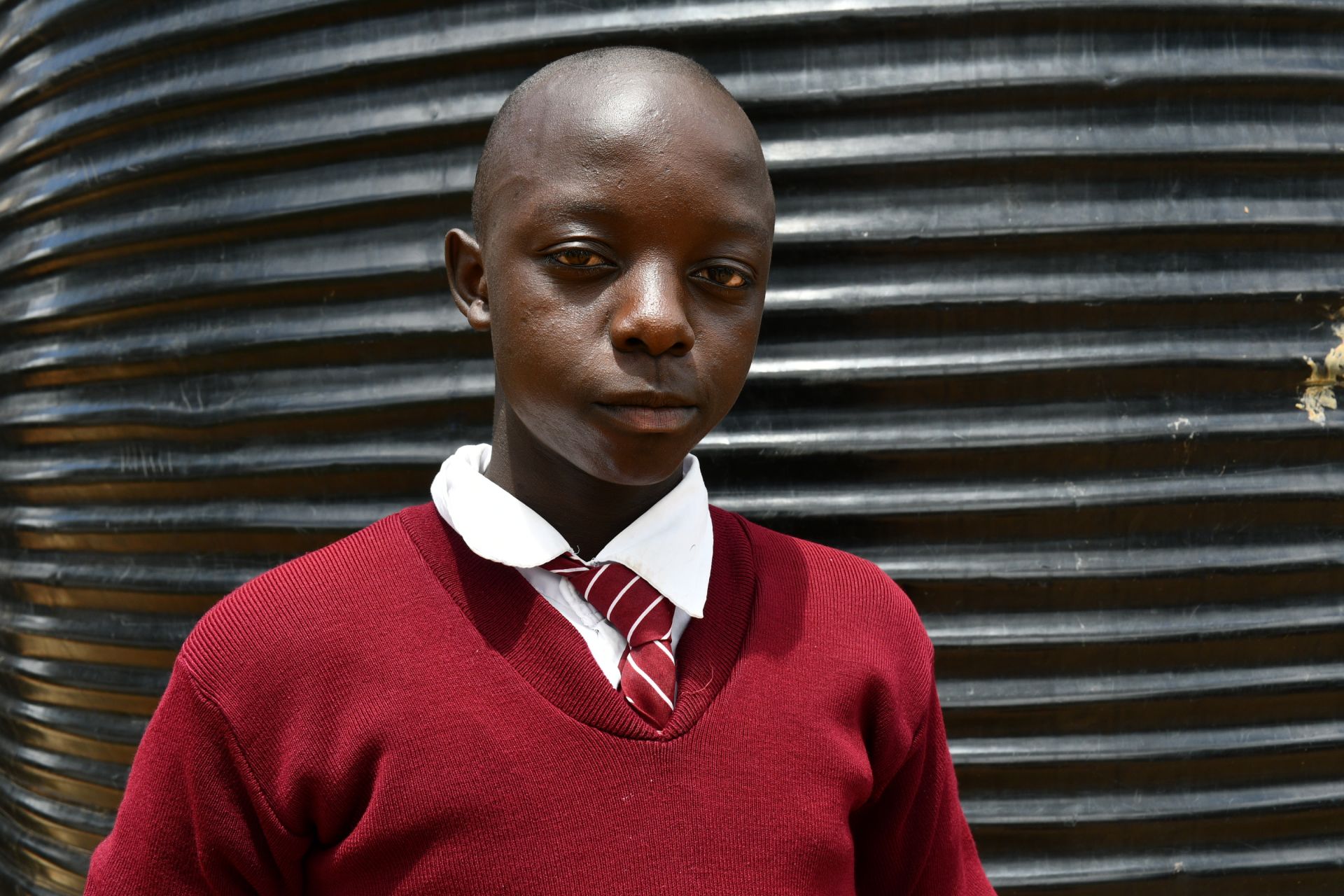
Patrick has dreams for the future, but until he can safely and efficiently access clean water, those dreams will likely remain unattainable.
But with a clean water solution at his school, the future can change for him and the entire school.
"The construction of a rainwater tank will provide a reliable and sustainable water source, directly addressing the current challenges of water scarcity faced by the school. By capturing and storing rainwater during the wet season, the tank ensures that clean water is available during dry periods when other sources may fail. This steady supply will improve access to water for drinking, sanitation, cooking, and cleaning, which are essential for maintaining good health and hygiene," shared Jefferson.
Steps Toward a Solution
Schools without reliable, on-premises water access often rely on students to fetch and carry water, leading to rationing and uncertainty about water quality. The water is typically poured into a communal storage tank and used by the entire school. With children carrying water from all different sources, it is also impossible for teachers and staff to know exactly where the water comes from and how safe it is to drink.
A new water point will be located on-premises at the school to ensure accessibility, reliability, and safety for students, teachers, and staff while meeting our school coverage goals. Having water available at the school allows children to drink, wash hands, and use sanitation facilities without leaving school grounds, preventing disruptions to lessons and reducing safety risks. A dedicated source increases water availability, reduces reliance on stored water, minimizes rationing, and ensures confidence in the safety of the water. This means staff and students are healthier, and their lessons aren’t disrupted, contributing to a better education!
Our technical experts worked with the school leadership and the local community to identify the most effective solution to their water crisis. Together, they decided to construct a rainwater harvesting system.
Rainwater Harvesting System
A rainwater collection system consists of gutters that channel rainwater effectively into large holding tanks. Attached to buildings with clean, suitable roofing, these systems are sized according to the population and rainfall patterns. Water can be stored for months, allowing for easy treatment and access. Learn more
Handwashing Stations
Alongside each water source, we install two gravity-fed handwashing stations, enabling everyone at the school to wash their hands. Handwashing is crucial for preventing water-related illnesses within the school and community. Student “health clubs” maintain the stations, fill them with water, and supply them with soap, which we often teach them how to make.
School Education & Ownership
Hygiene and sanitation training are integral to our water projects. Training is tailored to each school's specific needs and includes key topics such as proper water handling, improved hygiene practices, disease transmission prevention, and care of the new water point.
To ensure a lasting impact, we support forming a student health club composed of elected student representatives and a teacher. These clubs promote hygiene practices schoolwide and keep handwashing stations well-stocked. This student-led model encourages a sense of ownership and responsibility.
Safe water and improved hygiene habits foster a healthier future for the entire school.
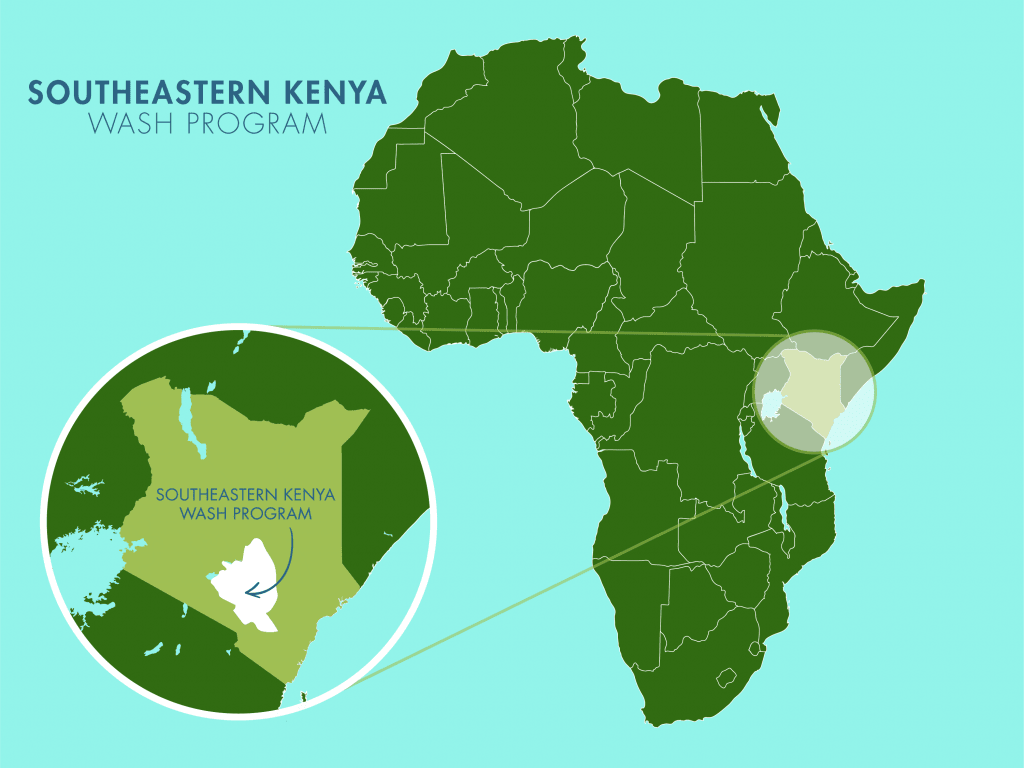
 Rainwater Catchment
Rainwater Catchment
 Rehabilitation Project
Rehabilitation Project





